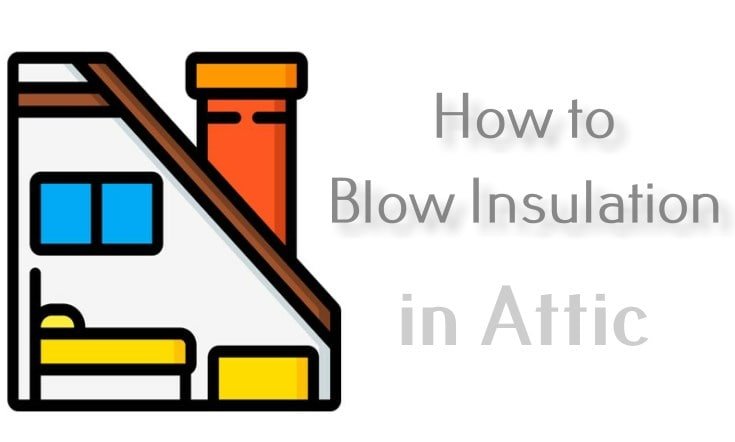Insulating your attic, particularly with materials like blow-in insulation, offers numerous benefits, such as energy savings, soundproofing, and moisture prevention. Properly insulating the attic can reduce heat transfer, leading to lower energy bills and a more comfortable living environment.
Additionally, blow-in insulation adapts well to various weather conditions, making it an ideal choice for attic insulation.
If you’re looking for a cost-effective approach to insulating your attic, blow-in insulation might be the way to go. Blow-in insulation, a type of loose-fill insulation, is ideal for attics with uneven joist spacing, particularly in older homes or those with low ceilings.
This insulation can be applied in a single-pass installation, efficiently covering every inch of thickness in the attic space. It’s an effective way to insulate hard-to-reach areas and ensure complete coverage.
The question is, how to blow insulation in the attic? Here are the 4 essential steps on how to blow insulation in the attic.
Read also: How to Blow Insulation in Walls
How to Blow Insulation in Attic
- Use a safety outfit and gear
Using goggles, respirator masks, clothes that cover your entire body, rubber anti-slip shoes and gloves is mandatory. Gear you need to prepare before blow insulation is plywood to stand on, a lantern to light up the attic, and a headlamp.
Most importantly, don’t forget your blow-in insulation machine. If you feel the machine is too expensive, you can simply rent it. It comes along with the hoes.

- Prepare the attic
You must first set your attic before blowing the insulation. Before insulating, it’s important to wrap any water lines and ensure no holes or air gaps. If any are found, they must be sealed first to prevent air leaks, which can significantly impact the effectiveness of the insulation.
Sealing these gaps is crucial for maintaining the integrity of the insulation and enhancing its performance. If there is, then you must seal it first. If the gap is quite big, you will need some caulk, but if it’s just a small hole, you can use spray foam.
Create a border around the furnace vent. Ensure all your recessed lights are bordered with a box with a 3-inch clearance.
- Ready to insulate
Creating a barrier in your attic space is essential to keep the insulation from spreading and ensure it remains in place. This step is crucial for maintaining effective heating and cooling efficiency. Properly installed barriers can help prevent the insulation from settling or shifting, especially around floor joists and rim joists, thereby preserving its insulating properties.
To help guide the overall thickness of the insulation, place pieces of wood in a few areas around the attic (around 12-15 inches). Try to remember the position of your lighting and other utilities. You can draw it for future adjustments.
- Blow-in Insulation Installation
For installing blown insulation, having assistance from another person can greatly speed up the process, making it a more manageable DIY project. This teamwork is especially helpful during single-pass installations, where maintaining a consistent inch of thickness across the attic is important for optimal insulation effectiveness.
This will be a very tiring process if you are a one-man show. Ready the machine, and blow the insulation to the farthest area from the door.
How to Blow Cellulose Insulation in the Attic
Generally, the steps to blow cellulose insulation in the attic are similar. The only difference is the fill bags you use are cellulose. This is also related to the cost you will spend for the insulation process. Usually, cellulose fill is cheaper than the loose-fill fiberglass.
One bag of cellulose fills only costs around $11. You also need to know the insulation’s R-value or heat flow resistance. The higher the R-value, the more fill you’ll need. The average blow-in insulation cost is $1,401, though prices may vary.
When considering how much insulation you’ll need, it’s important to calculate the R-value required for your specific attic. This will depend on your climate and the existing insulation.
Additionally, while blow-in insulation can be a DIY project, it’s crucial to follow safety guidelines and consider hiring a professional if you’re unsure about any part of the process.
Read also: Can You Paint Foam Board Insulation?
Those are the things you should know about how to blow insulation in the attic. When you choose a reputable blown-in insulation contractor, you should expect them to provide you with a warranty. However, if you decide to perform it yourself, you must be prepared to maintain the insulation if something goes wrong.


